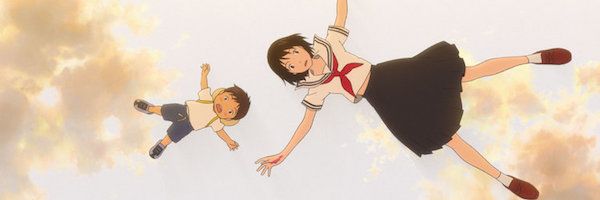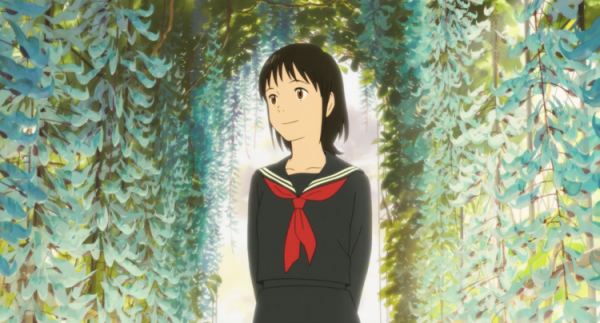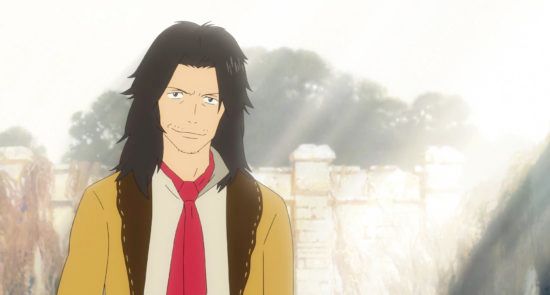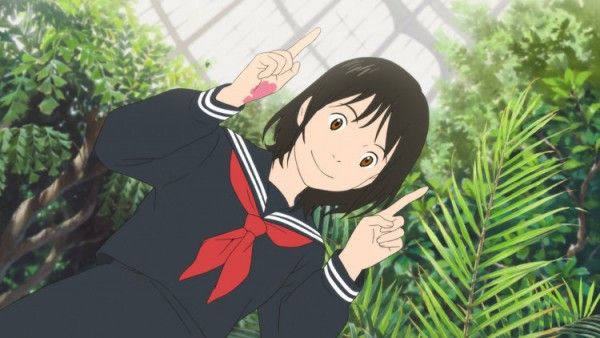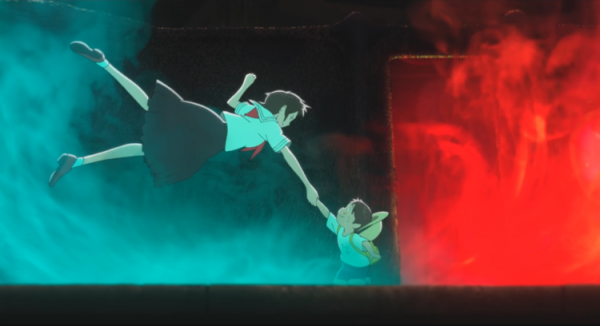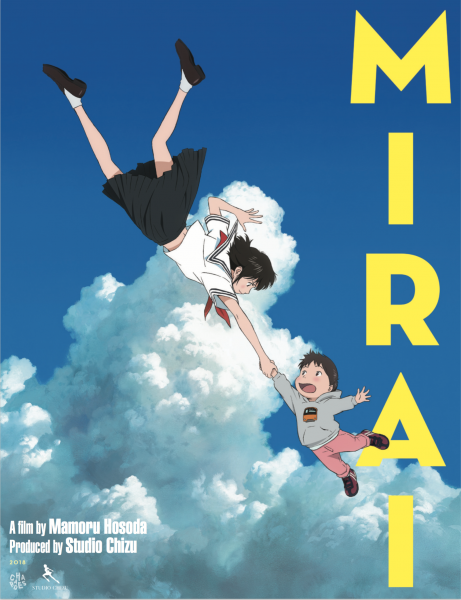Mirai, a family friendly feature arriving in theaters this week, is the latest film from acclaimed Japanese filmmaker Mamoru Hosoda (Wolf Children). In celebration of Mirai's arrival in U.S. theaters at long last, we had a chance to chat with Hosoda about his original tale. We talked about the inspiration for the story, finding a balance of fantastical and realistic elements, and technical challenges of animating the film and its characters. Plus, Hosoda, who was the key animator for a number of Dragon Ball Z titles in the 1990s, weighed in on the return of Broly to the big screen early next year.
The story of Mirai follows four-year-old Kun as he attempts to deal with the arrival of a new member of the family, his baby sister Mirai. When Kun finds himself unable to cope with the loss of his parents’ attention and the changing dynamics within the household, he seeks solace in a magical, indoor garden that allows him to travel through time and interact with some surprising characters.
Starring John Cho, Rebecca Hall and Daniel Dae Kim in the English-language cast, for which the first trailer was just released today, Mirai arrives in theaters on November 30th, courtesy of GKIDS. Check out the English trailer below, followed by our interview:
Collider: How did the idea for Mirai's story come about?
Mamoru Hosoda: When my son was 3 years old we welcomed a baby girl to our house. When we brought her home, my son looked surprised and maybe a little suspicious. When I saw that, I wondered how my son was going to accept his new role as a big brother, or the existence of his little sister. But as my wife and I were busy tending to our daughter, my son threw a tantrum saying that she had stolen our love away from him. When I saw that, I felt that I saw the naked soul of a human. That is where I got the idea for this film.
How much of it was drawn directly from your own experiences, either from childhood, adulthood, or parenthood?
Hosoda: When I spend time with my children I remember how it was like when I was a child. And I can relive my childhood through them. So there are various aspects of my experiences—from different stages in my life—scattered throughout the film.
Mirai feels less fantastical than Wolf Children or The Boy and the Beast, but it still has some fantastic elements. What was your thought process like in balancing realism and fantasy in Mirai?
Hosoda: The fact that the audience can see the world through a 4 year-old boy is the most fantastic part of this movie. This movie seems to be about a boy who—through a mysterious garden—goes through time or sees his pet as a human. But actually…because Kun doesn’t just live in a society for just humans he has that ability, or he is in that stage, where he can experience that. Humans, when they grow older and get educated, they lose the ability to see the fantastical things that they used to. They can only see humans. They can only see common sense. So I want the audience to experience the world that isn’t like that. A wondrous, mysterious world that a child sees.
On a related note, do you believe that Kun is able to connect with those around him because he's imaginative and intuitive? Or is his empathy aided by a more mystical, fantastical force?
Hosoda: Well, Kun is a selfish and spoiled child. As a movie protagonist it’s rare, but when you think about it, it’s normal for a 4 year-old boy to be selfish and spoiled. And then he is able to grow because he saw the other sides—their true natures—of his pet, mother, sister, and others. Because he saw the history of his family. It’s true that he was able to see those sides thanks to a fantastical force, but he was able to grow because of what he experienced and saw.
It's interesting that Kun is able to connect with his dog, his baby sister, his mother, and his great-grandfather in the "fantasy garden", but not his own father; why is that?
Hosoda: So in place of the father he meets his great grandfather. But Kun thought that his great grandfather was his father. And he learns to ride a bicycle because of meeting the man. Then later he learns that it was really his great grandfather. In the end, what Kun needed was a father figure to teach him—to give him courage—to ride a bicycle.
What part does the evolving and peculiar architecture of the house have to play in the story of the family and their own changing dynamics and relationships?
Hosoda: For this film, I didn’t ask the art director to design the house. Instead I asked an actual architect and worked with him on the design. I asked for a conceptual design that would symbolize Kun’s world. The room isn’t separated by walls but instead levels, and between the rooms there are windows. I wanted this because this is a story about Kun learning about family’s truths and secrets, and the windows allow them to see through them. The room being on different levels, with stairs, is a literal symbol of Kun stepping up and growing.
On a more technical note, what aspects of Mirai would have been more difficult if not impossible to animate the way that you did without the benefit of modern animation technology and techniques?
Hosoda: The most important part, technically speaking, for Mirai was the ability of the animators to observe, draw, and express a 4 year-old boy realistically. The techniques of those animators was essential to this film. And of course the CG technology was important to support the technique of the hand-drawn animation. There are many places where it’s animated in a way that you can’t tell that it’s CG. So that was also necessary.
What was the decision process like in finding a specific animation style for the Tokyo Station attendant, whose design is so different from everything else?
Hosoda: When a child gets lost, they are so scared and their imagination goes wild. That is what I wanted to depict, so that’s why I wanted to make it eerie, scary, and different. I used cut art, with the eyes cut out, to create the attendant because when a child is lost, even humans that they would know so well would seem robotic and scary.
While the aspects of the family story are universal, there may be some specific aspects of Japanese mythology and culture that aren't intuitive for Western audiences. What should Western audiences know or research about Mirai's mythological, religious, or cultural aspects that would help to clarify some story points?
Hosoda: Well, I guess Hinamatsuri (Doll’s Day) is a Japan-specific tradition. It’s a day to celebrate the growth of girls, and I’ve heard that there is nothing similar to it in other countries. But that doesn’t mean that you would have to look up hinamatsuri on the internet to enjoy Mirai. You just have to have a vague idea that it’s a day to celebrate your child’s growth, and there’s no need to learn the historical context. I don’t think many of the Japanese audience know the context either…I think?
Hinamatsuri is a Japan specific tradition. But it’s just a festival to celebrate the growth of girls.
What do you hope audiences take away from their experience watching Mirai?
Hosoda: Maybe the importance or connection with your family.
What's up next for you?
Hosoda: Mirai is very personal for me. I made it from a personal point of view. So the next one would probably be a complete opposite. Or at least that’s what I want right now. I think I would be able to show a different side of me in the next film, so please look forward to it.
As a bonus question, are you excited to see Broly back on the big screen next year?
Hosoda: (laughter) He is a long-living, long-loved character! I started as an animator in this industry in 1991, and then soon after that I helped with the Dragonball movie, where Broly first appeared in 1992? I didn’t think that he would come back after 30 years. And then to have people from all over the world talk about his return is quite amazing. I’m looking forward to the new movie too.
Mirai arrives in U.S. theaters starting November 30th.

